Introduction
Weighted blankets were first used in the holistic care of children who had difficulties with learning and attention. It was used as part of an approach called sensory integration therapy. Weighted blankets have since found applications in a wide range of conditions including insomnia, depression, restless leg syndrome, fibromyalgia, and anxiety disorders.
It has now become a go-to choice for physical and occupational therapists as a useful medical device in physical therapy. But while the origins of weighted blanket use lay in the therapeutic applications, it is now becoming common that people use it to get better and longer sleep.
This article will adequately inform you about what weighted blankets are, how they work, the benefits of using weighted blankets to alleviate the symptoms of a number of health conditions, and what you should consider when choosing the best weighted blanket.
By discouraging poor sleep, weighted blankets have a positive domino effect on the overall health of its user. People with poor sleeping habits are less likely to concentrate at school or be productive at work. They are also more likely to have high-stress levels which are known to predispose to cardiovascular and neurological disorders.
While drug therapy is a mainstay of many disorders and diseases, it is often complicated with many undesirable side-effects. These effects of drugs along with the need for preventive therapy are the major factors that have made weighted blankets very common.
Despite the increasing number of weighted blankets out there, concise information about different things you need to know about them is still sparse. A lot of readers want to know the best weighted blanket out there, the factors to consider when choosing weighted blankets, how a weighted blanket works and if it’s any much different from duvets and comforters.
First, let’s go into the weighted blankets I have reviewed:
OUR PICK
Quility Weighted Blanket
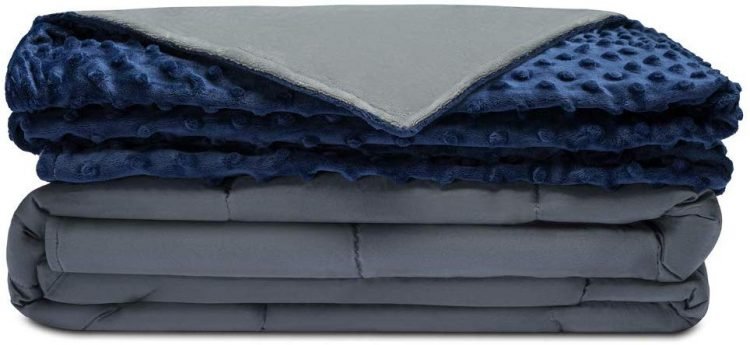
Adult: View on Amazon
Kids: View on Amazon
After reviewing many weighted blankets, this 7-layered premium Quility weighted blanket is our top pick. Using polyester padding and an outer layer of pure cotton, it makes for an excellent feel. Not only does it come in adult size, but they have a full range of kids sizes as well.
The sewing is very high-quality ensuring the blanket doesn’t leak its micro glass beads. These beads are sewn into individual pockets and are surrounded by microfill which provides an extra layer of cushioning. This also makes for a very quiet blanket if you happen to shift around in bed.
Visually, it also looks as good as it feels. While the weighted blanket itself is available only in grey or light grey, there is a selection between navy blue, grey, pink, aqua, and ivory duvet covers.
The cover can serve as an extra layer in winter and can be removed in the summer. Removing the cover is also quite easy to do; just unzip and untie at the edges. This makes maintenance a simple matter of dry cleaning the cover.
The blanket is, as expected, available in many sizes so that you can pick an ideally weighted one.
It also comes with a clear bag that can serve for stowing it away properly during travel or every morning. This and the duvet cover will cut a lot of the associated costs you might have had to bear otherwise.
As for the use, it doesn’t make much noise at night and really holds in place throughout the night. This is equally critical because weighted blankets that crinkle could be responsible for sleep disturbance and counter the pro-sleep effects of the weighted blanket. I can’t make a sweeping judgment of how it will improve everyone’s sleep, but I can testify it increased the quality of my sleep.
This blanket is highly recommended to anyone who wants the most durable, aesthetically pleasing and effective one on the market.
RUNNER UP
Rocabi Weighted Blanket

Coming a close second is the Rocabi weighted blanket. Made from organic cotton, the Rocabi has an excellent feel. Comfort is a theme common to all weighted blankets but the Rocabi takes it a step further. Like the Quility, it also comes with a removable cover but adds an extra feature of textured dots for extra sensory feedback.
The Rocabi is a balanced weighted blanket with the weight evenly distributed across the blanket. This is very important because, with some other blankets, uneven distribution can make you too conscious of the parts of your body not being weighted as much as others.
There’s not much range you can expect from the look of the blankets and its cover. They come in mostly grey and light grey. This is not to say they don’t look great but not having a range of colors to pick from may be a deal breaker for some buyers.
The glass beads are also hypo-allergenic, like those in Quility and stitched in quite excellently as well.
As for the utility of the blanket, It dissolves stress just as well as other weighted blankets, so no extra points there. But, again, the feeling that it weighs perfectly and evenly on every square inch of your body is a very relaxing one.
The Rocabi comes second to Quility mainly because of the price difference. For pretty much equal utility, there appears to be better value for your dollar in purchasing the Quility.
BUDGET PICK
YnM Weighted Blanket
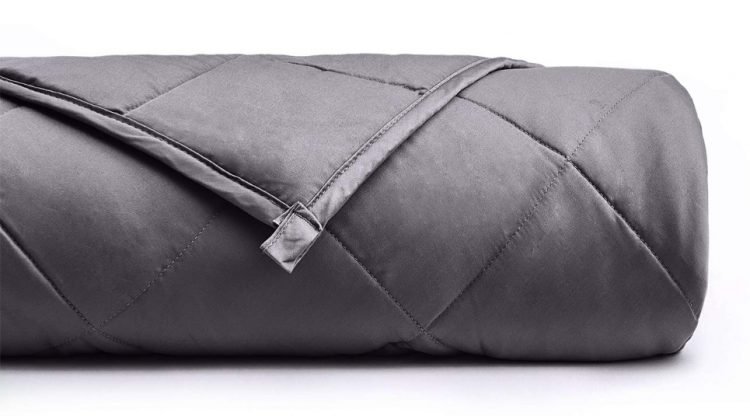
The architecture of the YnM weighted blanket is essentially the same as those of the Quility and Rocabi blankets. It also uses hypo-allergenic glass beads and is 100% cotton. Please note that this particular blanket does not include a removable cover by default. This is why the price point is so attractive and may be all you need if you are looking to get started with a weighted blanket.
The YnM has good texture and is easily breathable as well. Being 100% cotton is a huge plus and makes the blanket feel cooler to have on, especially in hotter climates. I would suggest adding a cover to this, just so it makes it easier to clean. Having said that, if you are on a budget and just want to try a weighted blanket out first to see if you like it, this is a great option.
It also has a wide range of colors to choose from. One downer about the YnM is that the seams come off more easily than the previously mentioned blanket. While the company says they offer free stitching repairs, I would rather my weighted blanket has no such problems in the first place.
The weighted blanket also feels unevenly distributed and as I said with the Rocabi, it’s super easy to notice when this is the case. You become overly aware of parts of the blanket that just aren’t weighing down enough. This is not sufficient to greatly reduce the quality of your sleep anyway. But for many buyers, it’s perfect or nothing.
Some users I have recommended the YnM to don’t experience this weight distribution problem I am discussing and have only excellent comments for the blanket. So, it is not impossible that I just got unlucky with my singular purchase.
Selling for less than the Quility and Rocabi, the YnM weighted blanket is quite the bargain. Not many weighted blankets in that price bracket combine a good architecture, non-allergenic weights and a range of sizes and colors to choose from while still having the same level of utility.
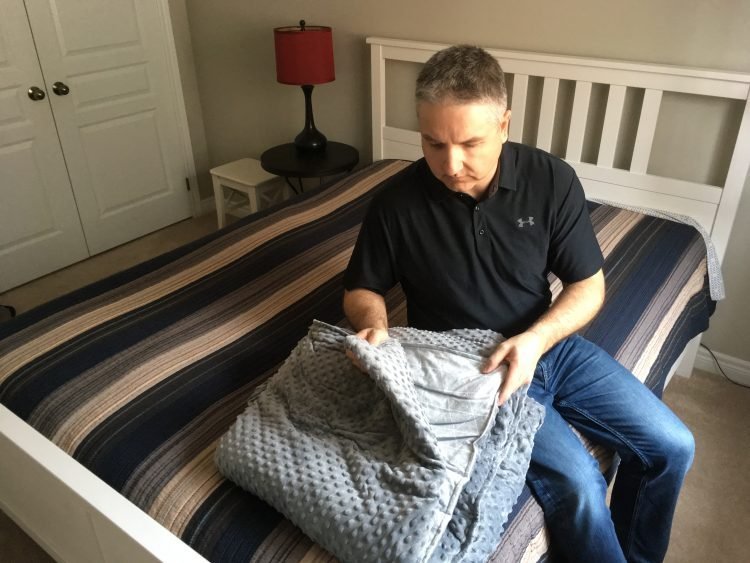
How is a weighted blanket constructed? What’s in them?
The price of weighted blankets can seem too high even for the number of benefits they have. It makes people ask, “what are they made of anyway?” This also can make one think up ways to construct home-made weighted blankets by improvising weights and using really thick blankets. But these are very unsafe and might do more harm than good.
Ideally, weighted blankets are constructed with inner pockets into which hold the weights. They then have layers of fabric sewn over them to make the blanket. Different materials are used to sew these layers that make the blanket.
Materials may be cotton, Mink fabric, polyester, fleece, or rayon-cotton blend. Choosing among these comes down to personal preferences and allergies. The major choices of fillings are micro-glass beads and polypropylene pellets. While the plastic polypropylene pellets are the traditional filling for weighted blankets, their use is fraught with many difficulties.
Home-made weighted blankets don’t enjoy the level of care and research put into making weighted blankets. For example, while plastic pellets and glass beads are an industry standard, home-made fillings are usually grains, dried beans or lead weights. While the former two are organic and could pose problems of bad smell and microbial infections after washing the latter can lead to other problems.
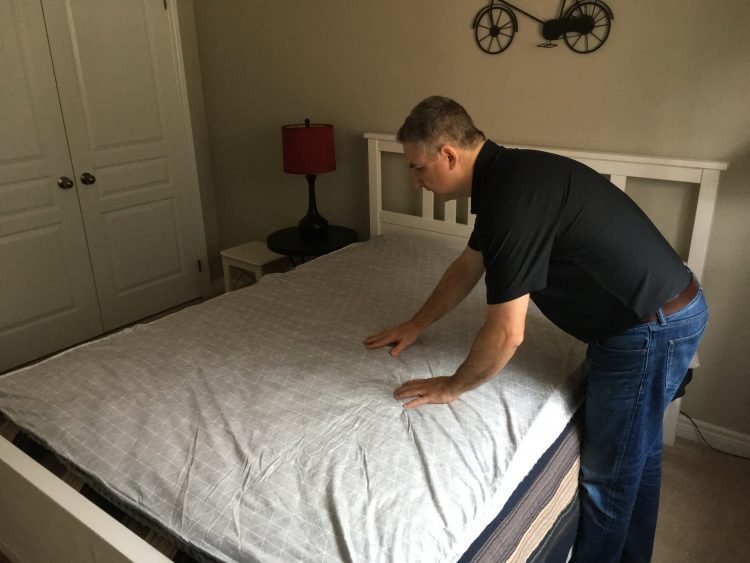
Are weighted blankets much different from comforters and duvets?
Some people also see comforters and duvets as cost-friendly alternatives to weighted blankets. However, they are radically different both in practical use and amount of research put into them.
Comforters and duvets are majorly used for one purpose: generating warmth. Looking at the Thermal Overall Grade (TOG) rating of a comforter or duvet, you can get a fair idea of how much insulation and warmth it can provide. This will enable you to make informed choices depending on just how cold it is. They also come in a wide range of prices and can easily be constructed using home-made blankets and fabric.
However, weighted blankets go a step further than just having insulation effects. They have been extensively used in curbing stress and body pain. These benefits have been scrutinized in peer-reviewed scientific publications. Weighted blankets come highly recommended by physical therapists for the management of anxiety, depression, and many other conditions. Being a medical device, it can also be reimbursed by some insurance plans
So, it is obvious that weighted blankets are quite different from comforters and duvets. Making the choice between them should be treated as a matter of utility. If you need something that can help with the cold and provide moderate comfort, the comforter is the choice for you but if you want a more versatile product, the weighted blanket is the way to go.
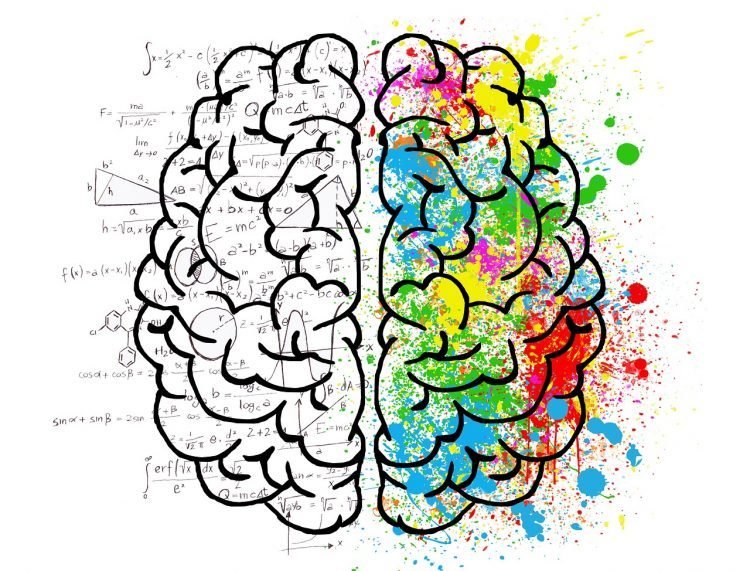
How does a weighted blanket work?
Our bodies are seas of several hormones. Hormones are chemical compounds in the body that regulate the behavior of different target organs. There are many examples of hormones that are released periodically to carry out or assist some bodily functions.
They include thyroid hormones, insulin, endorphins, melatonin, estrogen, serotonin, cortisol, and prolactin. To understand how weighted blankets work, this article will focus on endorphins, serotonin, and cortisol. This is because weighted blankets work by modulating these hormones.
Endorphins
Endorphins are synthesized in the brain and other parts of the nervous system. The name “endorphin” is derived from endogenous and morphine. They are the body’s natural shots of morphine. They attach themselves to the same receptors that analgesics do and unlike with morphine and many other analgesics, there are no side effects.
Another quality they share with morphine is a feel-good feeling they bring that is similar to morphine’s euphoric feeling. Exercise is one activity that can trigger the release of endorphins. They are also involved in the pathways by which weighted blankets work.
Serotonin
Serotonin is a chemical hormone produced in nerve cells and present in both the Central Nervous System and Digestive system. Serotonin is involved in influencing a great number of bodily processes including mood, libido, bone repair, wound healing and nauseation. Increased levels of serotonin improve mood, reduces anxiety, and promotes bone health and wound healing.
Perhaps one of the most well-known roles of the Serotonin hormone is related to its effects in modulating mood and anxiety. Serotonin is called the happiness hormone because reduction (or downregulation) of its secretion can lead to depressive episodes. Its reduction can also predispose to anxiety states. For this reason, many drugs for depression and anxiety disorders are based on increasing the secretion of the Serotonin hormone.
Lastly, serotonin is a precursor to another important hormone, melatonin.
Melatonin
Melatonin is released by the pineal gland and is critically important in regulating the body’s sleep-wake cycle.
Low levels of this hormone can cause poor sleep or even insomnia. Drugs mimicking its effect have therefore been developed to help with poor sleep and jet lag.
Cortisol
Cortisol has been nicknamed the “stress hormone” and the “wake-up hormone”. The effects of this hormone are obvious from the nicknames it goes by.
Cortisol is synthesized in the adrenal gland and is released when the body undergoes stress or low sugar levels. Stress need not be physical to raise cortisol levels. In cases of infection, the body also increases its secretion of cortisol.
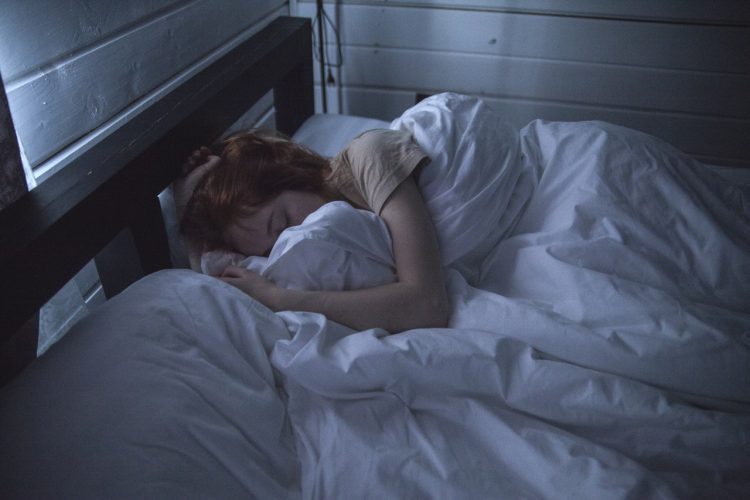
Where weighted blankets come in
Weighted blankets work by exerting weight on the body of the user. This weight is sufficient to give a feeling akin to a gentle squeeze or a hug. This “squeeze” has the effect of activating the Deep Pressure Touch (DPT) zones in the body.
The activation of DPT zones directly leads to the release of endorphins and serotonin. It also causes a corresponding reduction in the secretion of cortisol.
By releasing endorphins, the weighted blanket serves as an analgesic so to speak. One reviewer on the New Yorker commented that using a weighted blanket felt like being covered with a blanket of Advil. The simultaneous release of serotonin will also raise low mood.
For its effect on sleep, weighted blankets rely on the increased production of melatonin and the reduction in cortisol. You will recall that we noted that melatonin is produced from serotonin.
Thus, an increase in the secretion of serotonin will also raise melatonin levels. This will lead to deeper and more restful sleep. The reduction in blood levels of cortisol, the “wake up” hormone results in longer sleep.
These
are the basic ways weighted blankets exert its effect on pain, mood, and sleep.
Many ways to better health,
what is the weighted blanket’s way?
Mental and physical wellness can be ensured or managed with a great variety of methods. Most of the time, it is preferable to use a holistic approach but we may not have the economic wherewithal, time or discipline.
For example, obesity is a leading cause of cardiovascular disease in the United States. There are several methods to deal with this predisposing factor. The most common route is exercise, in order to burn fat and gain more fitness. An equally well-used route is via diet. Many diets that promise a reduction in unhealthy weight are freely available online and nutritionists can also advise properly.
Both of these methods, however, require a level of discipline and grit. There is also the pharmacological route which is most often opted for. However, the more organic methods that don’t require you to use pills are better. This is because of the absence of adverse effects.
In the field of stress relief and mental and physical wellness, in which weighted blankets find a myriad of applications, there are surely alternatives. These separate alternatives sometimes need to be used together for optimal results. They include:
Pharmacological Approach
Many people see pills as a fix-all. There is a widely held notion that there are drugs for virtually every conceivable condition. While some conditions and diseases are more responsive to drug treatment than others, the notion is widely true.
There are multiple classes of antidepressants, anxiolytics, analgesics, mood stabilizers and so on. However, none of these drugs are perfect. The adverse effects of antidepressants include fatigue, insomnia, a drop in libido and can even include a paradoxical increase in suicidal ideation.
The use of anxiolytics and sedatives to aid restful sleep can lead to dependence of users on pills to get any sleep. It could also tamper with the normal sleep-wake cycle.
With regard to pain meds, tolerance can easily develop and make the user require higher and higher doses for the same level of pain. Among NSAIDs, a class of analgesic among which the development of tolerance is not common, excessive use can lead to the development of gastric ulcers.
This is not to say pills are to be avoided like a plague. They are usually the first line of medical care and could prove the most useful when acute relief is sought. However, you should not constantly depend on them.
If there are lifestyle modifications, for example, that can help you reduce your stress levels, it is more advisable to make them than resort to medication.

Lifestyle changes
What do we mean by lifestyle changes? Does it mean if your work is a tad bit stressful, you should quit it? Not necessarily. Lifestyle changes run deep into your day to day activities within and outside the framework of work.
Two key areas where you can make changes are your diet and your sleep habits. The importance of a balanced and healthy diet cannot be overemphasized. Most times, we know the unhealthy food decisions we take but we take them anyway. Think about balanced diets as investments towards a healthy future. Eat your broccoli!
Diet changes are not limited to food. Many people also make unhealthy drinking decisions. Not just as regards heavy alcohol drinking but also with carbonated drinks. Water still remains one of the healthiest drinks out there, but fruit smoothies come really close.
Quitting smoking, an activity that predisposes to lung cancer and neurological disorders, is also a critical lifestyle modification to make.
Exercise
Incorporating exercise into your daily life is also an important non-pharmacological approach to bettering your health. Many people jog for the benefits it presents in weight loss and improving cardiovascular health but there are many more.
As we have discussed earlier, exercise enhances the release of the body’s endorphins. Endorphins are potent hormonal analgesics that can even give a brief feeling of natural euphoria. This may seem paradoxical that exercise can be a method for managing pain but give it a try and see how well your endorphins combat pain!
The energy dissipation that occurs during exercise also makes the onset of sleep faster. Other overlooked benefits of regular exercise are increased concentration, improved cognitive function, and improved sex life.

Physical therapy with weighted blankets
Physical therapy is a cornerstone of care in the management of some conditions such as arthritis and fibromyalgia, and also helps patients cope with neurological disorders like stroke and spinal injury fractures.
Physical therapists both help patients to carry out physical therapy exercises on an in-patient basis but also recommend exercises that the patient can do at home. “Exercises” here do not refer exclusively to jogging, push-ups and what we have come to know exercise as but it can include it.
Recently, weighted blankets have become another medical device aiding the practice of physical therapy. By simulating a deep massage or a tight hug, activating the deep pressure touch zones and thus influencing the levels of the hormones we have already discussed (endorphins, serotonin, melatonin, and cortisol), physical blankets have gained application in a wide range of conditions.
The use of weighted blankets in the physical therapy of these conditions by physical and occupational therapists has had varying levels of success.
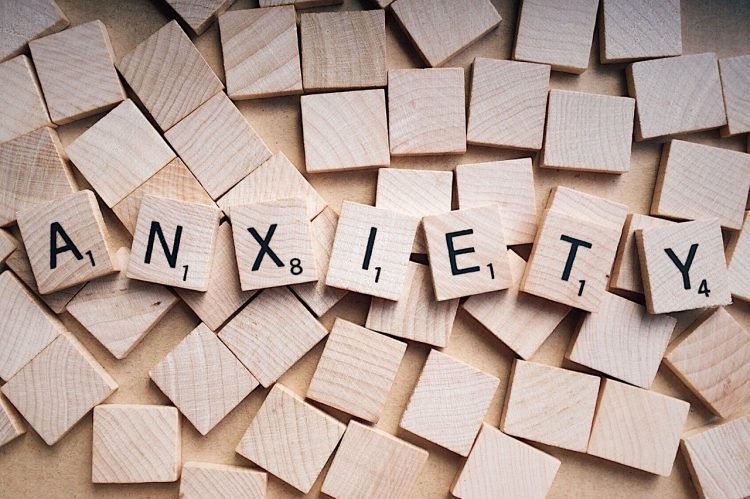
Using a weighted blanket
Weighted blankets can be used either in a sitting position or while lying down. The choice between both positions is dependent on what you are using it for.
If its to aid restful sleep in insomnia, it is recommended that you lie down and cover yourself in it as you would a blanket. This weighs the user down sufficiently to stimulate the DPT zones and cause the appropriate effect.
In other cases, such as when someone suffering from fibromyalgia is involved, it would be more appropriate to wrap the user’s body completely in the weighted blanket.
Sleeping might also not be the goal. In cases where the goal is to keep an anxious person or hyperactive child calm during work or class, respectively, it is sufficient to drape the weighted blanket over the shoulder of the user. This provides a calming reassuring weight that has a feeling akin to a hug.
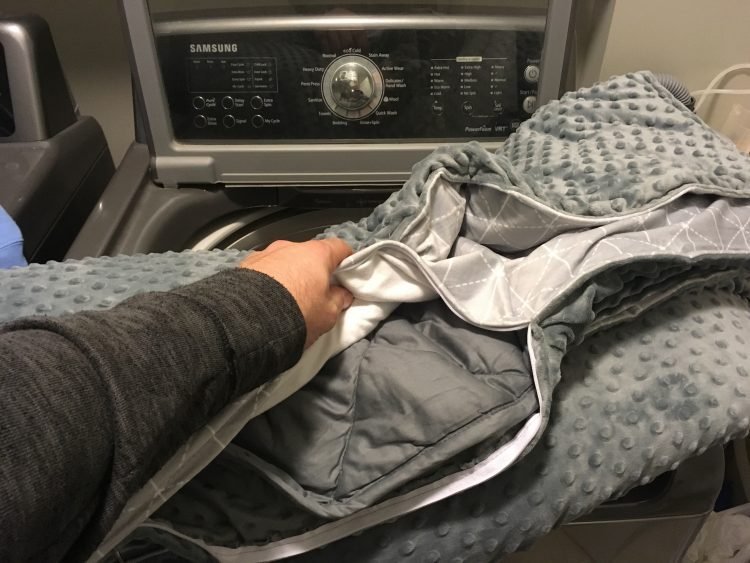
How do you take adequate care of your weighted blanket?
Looking back at the construction of the weighted blanket, it is obvious that the weighted blankets are large and elaborate. The method you adopt for caring for your weighted blanket is mostly determined by the fabric which blanket is made with.
This is why weighted blankets come with washing instruction specific to the type of material used in making them. Generally, with cotton blankets, you can wash the blanket in warm or cold water and proceed, afterward, to line-dry. For satin and waterproof blankets, using warm water could damage the material.
The weight of the blanket is also a valid consideration. For heavier blankets above 25 pounds, washing should be done with industrial and commercial washers.
After washing, it is important to check the integrity of the weight pockets. While the best weighted blanket manufacturers ensure that the stitching of their weighted blankets is top grade, you must add an extra layer of assurance by checking yourself. This is especially important for children who can be exposed to small plastic pellets if a stitch gives way.
Washing weighted blankets is one of the issues that make homemade weighted blankets problematic. Water can easily enter the pockets of organic weights often used in these blankets and cause the build-up of bacteria.
However, people have complained about the amount of time it takes a weighted blanket to get dry. Weighted blankets can be quite pricy, and alternating between two blankets when one has been washed might not be an economic possibility for all.
The
best weighted blanket manufacturers include a zippable weighted blanket cover
in their designs. This makes the task of maintaining a weighted blanket
particularly easier.
What age is appropriate for a weighted blanket?
It is inappropriate to use a weighted blanket for a child below the age of 1. For children above 1 year and below 6 years, a weighted blanket should only be used on the recommendation of a physician or a physical therapist.
While weighted blankets can be used in this age demographic, it is important to ensure that the weighted blanket in use is not too heavy to lift off by the user, without help. This is because you, as a parent will not always be on hand should the toddler feel too pressed by the blanket.
Weighted blankets should only be used with the child and teenager demographic in cases of medical conditions such as ASD, Asperger’s, night terrors and so on.
Weighted blankets can be used for stress management in older populations and have also found use in pain management among the elderly.
How safe is it for me to sleep using a weighted blanket?
As we have just discussed, weighted blankets are unsafe in children below the age of one. This is because of a possible risk of Sudden Infant Death Syndrome (SIDS). For other age populations, weighted blankets are totally safe to sleep with. It is, however, advisable to insist on breathable blankets so as to guard against any risk of suffocation.

What to look out for when choosing a weighted blanket
The ideally-weighted blanket
When it comes to choosing a weighted blanket, the weight of the blanket is perhaps the most important consideration. Choosing the ideally weighted blanket is necessary for the weighted blanket’s grounding action which allows for sufficient stimulation of the Deep Pressure Touch zones. Without using a weighted blanket with a weight appropriate to you, you cannot get the benefits sought even if you’re using the most highly rated blankets on the market today.
The weight of your blanket is dependent on your own weight. But not just your weight, your ideal weight is an important factor. Your ideal weight is the weight expected based on metrics such as sex, age, height, and fitness level. To calculate your ideal weight, there are several online tools available for that purpose.
The weight of your ideal blanket should be about 10% of your ideal weight.
The ideally-sized weighted blanket
While having the ideal weight for a blanket is important, having an ideally sized blanket is also important. The appropriately sized blanket must be able to roll right around you and swaddle you in a sitting or lying position.
For a regular sized child below the age of ten, a small-sized blanket of 35 inches by 50 inches is sufficient. For teenagers and adults, blankets sized around 40 inches by 60 inches are appropriate. But these sizes are mere guides. Some larger adults may require blankets closer to 45 inches by 70 inches.
What other considerations should I make in choosing a weighted blanket?
Another important thing to consider is the material of the weighted blanket. This is often a matter of preference. Most users prefer a cotton weighted blanket but other choices such as rayon, Minky fabric, polyester, and fleece are available.
The choice of material can also be influenced by ease of maintenance. While we have said the best weighted blanket manufacturers make sure to include a weighted blanket cover which makes maintenance ridiculously easier, the weighted blanket itself might still get stained or dirty. This is especially the case when the weighted blanket is being used by a child or even a teenager.
For some people, aesthetics is also important. While the most important thing for all buyers is that the weighted blanket does what it is intended for, be it sleep or stress relief, looking nice is not bad as well. Weighted blankets can come in different colors and patterns.
Patterns can become useful to facilitate ease of weighted blanket adoption with kids. While kids will come to love their weighted blankets anyway, it may not be easy to get them using the blanket early on. So that the best weighted blankets for kids might be custom-made ones with pictures of the child’s favorite cartoon characters. This could serve as an incentive to get under the blanket.
Allergies are another consideration that should be made. If you’re allergic to any of the blanket materials, be sure to avoid a blanket made from it. Even when the weights are well packed and sewn in, if they are made of plastic and you’re allergic to plastic materials, opt for hypoallergenic glass bead weights.

Weighted blankets buying advice
What are the costs of getting a good weighted blanket?
While there’s a weighted blanket for every price budget, you must be careful not to sacrifice quality for costs. Think about how important your sleep or the health of your child is and pay the price for quality. The blankets reviewed here represent some of the best and economical weighted blankets choices available on the market. The Quility blanket, the Rocabi weighted blanket, and the budget pick, YnM cost $129.70, $199 and $69.50 respectively.
Will insurance cover my weighted blanket?
This is a very common question that arises when people think the prices of weighted blankets may be too steep for them to pay. The answer is not straightforward. Medical insurance should normally cover medical devices and since weighted blankets can be prescribed by physical therapists, occupational therapists, and physicians, they qualify as medical devices.
You should, first, reach out to your insurance provider to ask if weighted blankets are covered in your insurance plan. If they do, the next step is to get your healthcare specialist to write the prescription. A second option that precludes direct dealing with insurance officers is getting a medical supply agency to supply the weighted blanket and then have them bill and obtain payment from your insurance providers.
What are some conditions where weighted blankets are useful?
Anxiety
We all have a faint idea of what anxiety means as we have all felt “anxious” at one point or the other. Usually, this feeling can be just a brief passing phase. Pathological anxiety is when these feelings become characterized by grave fear, intense dread and hours spent in constant worry. This feeling of anxiety is usually sufficient to disrupt the normal daily flow of the sufferer’s life.
There is a myriad of recognized anxiety disorders. They include generalized anxiety disorders, obsessive-compulsive disorders, social phobia, and post-traumatic stress disorders (PTSD) and the more common panic attacks.
When people suffer from generalized anxiety disorders, they worry excessively about events and generally “overthink” everything, from work to relationships and so on. Panic attacks refer to a sudden onset of crippling anxiety that makes it extremely difficult to get anything done.
Social phobia refers to intense anxiety in social scenarios. OCDs are repetitive behaviors that stems from irrational anxieties while post-traumatic stress disorder is anxiety as a direct aftermath of traumatic events.
Not all types of anxiety are, however, caused by traumatic events. Day-to-day stress in relationships, at college or at the workplace can precipitate bouts of anxiety. Constant worry about job security and financial security can also lead to anxiety attacks. Anxiety can also be caused by the use of illicit drugs or can manifest as a side effect of some prescription medications.
Some symptoms commonly associated with episodes of anxiety are excessive sweating, restlessness, reduced attention spans, lapses in concentration, irrational worry, over-vigilance, and insomnia.
The everyday costs of anxiety are high. The ability to concentrate at work and school becomes difficult and productivity dips. It also makes it difficult for the sufferer to commit to decisions.
The management options for anxiety disorders include lifestyle modifications and medication use. Lifestyle modifications that could serve as measures for tackling anxiety include quitting alcohol and drug abuse, making conscious efforts to lower stress levels by reducing hours of work, and following a healthy and balanced dietary plan.
Pharmacotherapy is a mainstay of anxiety management and medications such as selective serotonin reuptake inhibitors (SSRIs) and sedatives are frequently prescribed.
Therapy, whether as physical or mental therapy, is also another major mainstay of anxiety management. Psychotherapy includes sessions with psychologists where people with anxiety disorders can undergo cognitive behavior therapy. Physical therapy can involve light exercise, breathing exercises and therapy with a weighted blanket.
A look at the medications used as antianxiety meds reveals that the prominent mechanism of action involves the stimulation of serotonin release, a mechanism common to weighted blankets. Swaddling yourself in a weighted blanket can, thus, reasonably substitute for pharmacotherapy sans the side effects.
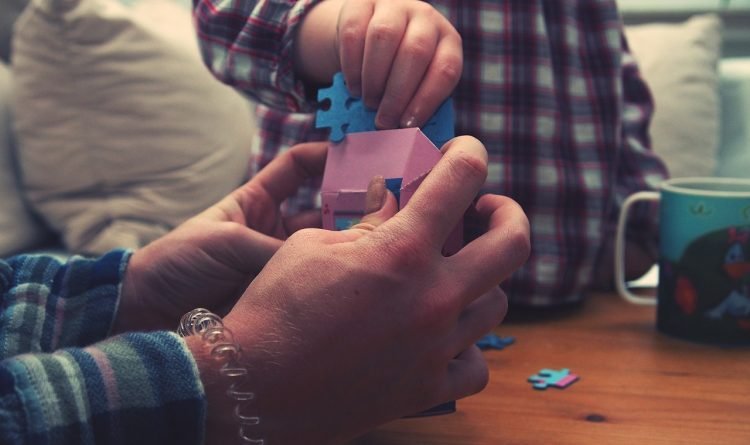
Sensory Processing Disorder
The exact root cause of Sensory Processing Disorder (SPD) is still yet to be found out but current research points to a genetic link. SPD is a condition of sensory misinterpretation. The brain, in an individual suffering from this condition, fails to process sensory information gotten from the senses of sight, smell, touch, taste, and hearing. SPD, known in some circles as Sensory Integration Dysfunction (SID), affects all age groups.
Symptoms vary widely from person to person but they can be generally classed into two major groups; symptoms that have to do with hypersensitivity and others with hyposensitivity. No one of these two classes is “better” than the other; they affect the variety of activities people who suffer from them can participate in the same extent and, thus, affect abilities to integrate properly into social groups.
In hypersensitivity, for instance, there is a response of extreme discomfort to sensory experiences others might consider normal. The tactile experience of a handshake, a hug or a slight tap on the back can be extremely revolting to a person with SPD.
For visual experiences like neon lights, street lights or colorful cartoon shows, the sight might be overwhelming as well. Music, ambulance sirens and excited chatter will also easily disorient someone with SPD.
The reactions of people with SPD to these stimuli might feel like overreactions to anyone not properly educated about the condition. This has the effect of socially alienating people with SPD from classmates or co-workers.
In patients that have symptoms of hyposensitivity, the manifestations are equally undesirable. Reduced response to stimuli could mean that hearing is impaired to an extent. This could lead to a reduction in concentration in classrooms or in everyday conversations. Failure to readily distinguish colors could be fatal when running through traffic.
Another everyday manifestation of visual hyposensitivity is in waking up in the morning. For many of us, sunlight beaming into the room every morning is a trusted alarm system. This may not be possible for some people with SPD who may not feel the stimuli of the light sufficiently.
The single most significant problem with people that have symptoms in this broad class is the inability to feel pain after an injury. Thus, a potentially fatal cut may have happened mistakenly and bleeding may already be serious but someone with SPD might not be able to process it. This is a constant source of anxiety for parents of teenagers with SPD who insist on playing sports. The effect of injuries manifests regardless of whether or not pain is felt.
One of the most effective options available to physical and occupational therapists for SPD treatment is sensory integration therapy. Sensory integration therapy involves the institution of a group of regular exercises that come together to make a “sensory diet”.
Weighted blankets form an important part of these sensory diets especially in the rehabilitation of tactile senses. Those in search of the best weighted blanket for SPD applications should go after weighted blankets with sensory dots in order to further improve the tactile portion of the sensory diet.
Other benefits of a weighted blanket in people with SPD include facilitating long and restful sleep. This is particularly important in hypersensitive patients who may find it difficult to fall asleep as a result of a myriad of sensations in the environment. Swaddling a person with SPD in a weighted blanket gives the impression of blocking out external stimuli.

Autism
Autism spectrum disorder (ASD) has been linked to a mix of genetic and environmental factors. ASD is a group of developmental disorders that manifest as impaired social and communication skills as well as obsessive and repetitive actions. Weighted blankets first found extensive medical use in this condition.
ASD manifests as an impediment to learning, speaking, and schoolwork in children. As they grow older and enter social scenarios, it could manifest as social anxiety and unempathetic responses. This stems from an inability to properly gauge people’s emotions in such scenarios.
The management of ASD is necessarily multifaceted. Specialists from the fields of speech therapy, occupational therapy, neurology, and psychotherapy are keenly involved. Antipsychotics are a major part of therapy. The family is also very important in the therapy of ASD patients. Family members are thus always encouraged to sit in on therapy sessions to help them understand the course of the management and learn how they can help and play their own part at home.
Weighted blankets benefit people living with ASD in the area of sleep improvement. In children, prescribing sedatives is a no-no. Parents, therefore, prefer their kids are given weighted blankets. The best weighted blankets lead to as long and as deep sleep as sedatives do.

Attention-deficit/hyperactivity disorder (ADHD)
Attention-deficit/hyperactivity disorder interferes greatly with child development. It is a mental disorder that manifests as hyperactivity, impulsiveness and ultra-short attention spans. The inability to concentrate on specific tasks is not as a result of a lack of understanding of instructions or a lack of will to do a particular task. It is, however, a medical problem.
This is not always understood and in families that are poorly educated about the condition, it is usually misconstrued as stubbornness and nastiness on the part of the child. This could lead to bouts of physical and verbal abuse.
Hyperactivity is particularly difficult to cope with because one moment a kid is here, the next he’s under a chair and then beside the gas cooker. Injuries often result from this symptom. This hyperactivity is not dependent on the environment a child with ADHD finds themselves. It comes to the fore whether it’s in a familiar environment or not.
Impulsivity manifests in a lack of social finesse, inappropriate responses, sparks of aggression and unpremeditated actions.
Other symptoms of ADHD include frequent mood swings and cognitive underdevelopment.
The exact cause of ADHD has also not been pinpointed but genetic links have been found; children with relatives with ADHD are more likely to be born with the condition. Radioactive exposure and exposure to toxins while unborn can lead to a range of conditions including ADHD.
Head injuries early in the development of a child have also been linked to the incidence of ADHD. Babies with extremely low weight at birth have been found to be at risk of ADHD as well. Men are far more predisposed than females to ADHD.
ADHD is not limited to kids and affects adults as well. In adults, there is a huge tendency towards social ostracism as a result of inappropriate spontaneous reactions and behaviors. This may explain why people with ADHD are also likely to develop depression and anxiety disorders. This is another reason why community education and involvement is needed in ADHD.
A combination of pharmacotherapy, psychotherapy and physical therapy is used to manage ADHD. Pharmaco-therapeutic interventions tackle symptoms such as impulsivity, hyperactivity and other secondary conditions (such as anxiety and depression). There are also meds that raise concentration and thus make learning possible.
Psychotherapy sessions through behavioral therapy and cognitive behavioral therapy are also a critical part of management. Other forms of therapy such as group therapy with a spouse or with family members serve as educational sessions and help groups cope better with persons living with ADHD. Support groups made up of adults with ADHD can also serve as an important support mechanism.
Physical therapy with weighted blankets has been a groundbreaking innovation in the management of ADHD. The success of physical therapy has been most noticeable in the children population. Weighted blankets function in this sphere by, through its weight, providing a disincentive to movement and improving calmness by its induction of the release of serotonin.

Insomnia
Insomnia gets increasingly more common among Americans every passing year. This could be as a result of several factors, which we will still look into. Technically, the authority on the diagnosis of mental disorders, the Diagnostic and Statistical Manual of Mental Disorders, Fifth Edition (DSM-V) defines insomnia as “chronic complains about poor sleep despite repeatedly having the opportunity and trying to sleep”.
Insomniacs experience symptoms that range from difficulty sleeping to grogginess in the morning, to weakness and lack of concentration at work or school and a reduction in cognitive acuity. These symptoms can have far-reaching effects both on workplace productivity and social or romantic relationships. Insomnia could also be a gateway to stress and the attendant conditions that arise as a result of stress.
Causes of insomnia are wide-ranging. It could arise as a result of a long period of worry and anxiety over issues such as bad relationships, exams or, perhaps, unemployment. It can also be as a result of other medical conditions such as night terrors and depression. Excessive use of caffeine and nicotine, mental stimulants, can also produce the same effect.
Just as there are different causes of insomnia, there are also different ways to deal with it. The most obvious method is to make lifestyle changes that were likely underlying causes. For example, if you suspect that your insomnia is as a result of chronic caffeine or nicotine use, taking steps to curb their use will lead to drastic improvement in your sleep cycles.
Treatment of an underlying medical condition such as depression or anxiety can be a route to better sleep. Prescription drugs can also be taken to induce sleep. However, using drugs to get sleep can be tricky. The brain can become overly dependent on drugs to help you fall asleep. This dependence development is dangerous and sedatives are usually given only in the short term.
Physical therapy can help in the form of brisk exercises before sleep or through the use of weighted blankets. While exercises serve to release endorphins that can be beneficial in falling asleep, weighted blankets exert their anti-insomnia effects via two different hormonal mechanisms.
First, it increases the production of melatonin by inducing the increased secretion of serotonin. Melatonin is a critical hormone in the sleep cycle and its upregulation as a result of the actions of a weighted blanket can bring about deep sleep. Secondly, by reducing the secretion of cortisol, which is the wake-up hormone, weighted blankets allow for longer sleep.
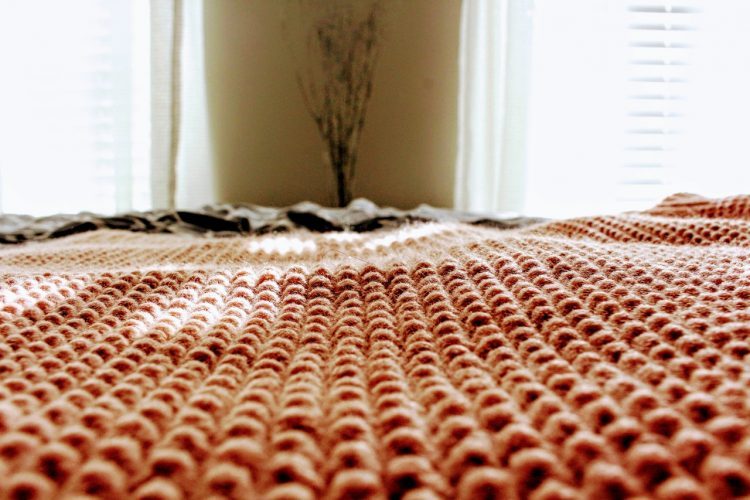
Fibromyalgia
Fibromyalgia is a medical condition characterized by constant pain and tiredness which is unrelated to physical stress or exertion. People who suffer from fibromyalgia feel this immense pain all over the body. The condition affects both sexes and all age groups but is more predominantly seen among men and adults. There also exists a genetic link; people with relatives who had fibromyalgia are more likely to have the condition as well.
Studies have linked the onset of fibromyalgia to an increase in brain activity and pain receptor sensitivity. The result of this hypersensitivity is that every day stimuli will cause extreme bouts of pain. Pain is, however, not the only symptom of fibromyalgia. Other symptoms such as anxiety and insomnia can come up as a result of it. Another important manifestation is difficulty in concentrating on any activity. This difficulty is often called the “Fibro Fog”.
While painkillers are commonly prescribed as a treatment for fibromyalgia, people suffering from the condition have a high tendency to abuse them. Excessive use of painkillers such as NSAIDs can have damaging effects on your gastrointestinal system by causing GI bleeding and gastric ulcers. Acetaminophen is not an NSAID but excessive use of this medication can predispose one to liver failure.
What then are the safer options? Lifestyle modifications such as adopting an exercise regimen and following a healthy balanced diet plan can only give incremental progress in the management of the condition. Physical therapy with weighted blankets offers an approach that is beneficial both on short and long term bases.
Weighted blankets, through stimulation of the deep pressure touch zones induce release of the body’s natural painkillers; endorphins. These pain-relieving peptides act to relieve the pain of fibromyalgia without causing the side effects seen amongst prescription medications.
If a particularly intense acute bout of fibromyalgia, known as a “flare up”, occurs there’s a need to speedily remedy the pain. A weighted blanket can be used immediately, with the person experiencing the flare-up staying swaddled till it passes.
To tackle the disorientation that comes with fibro fog, weighted blankets can come in particularly handy in school or at the workplace. The alternative method for tackling an episode of fibro fog is taking time to sleep but this is not practicable in working environments. For people living with fibromyalgia, swaddling in in the sitting position could be the difference between being productive or not.

Depression
Erroneously, a lot of people equate transient periods of low moods and sadness with depression. Minor events such as a pen going missing, going out without an umbrella can bring about scenarios that leave us sad. This, however, should not be taken to mean a diagnosis of depression. The official definition of depression according to the DSM is consistently low mood, energy for a period of two weeks and above.
Depression can be an aftermath of major tragic life events. Common examples are getting a divorce or the loss of a loved one. Depression can also arise without an identifiable trigger. There is also a genetic factor; people with a family history of depression are more likely than others to get depressed. Men are three times less likely than women to come down with depression.
Manifestations of depression include a suicidal tendency, low drive, excessive eating and drinking, and general dullness. Depression can affect the will to wake up in the morning, drive to work or school and be productive there. It can also lead people to abandon social or romantic relationships.
The management of depression is multifaceted. It is most usually a holistic effort. All members of the mental health team; psychiatrists, psychologists, social workers, occupational therapists, physical therapists, pharmacists, and nurses come together to provide care to depressed patients.
The major approach by psychiatrists is to introduce pharmacological treatment by prescribing antidepressants. There are a number of chemical groups of antidepressants. Popular classes are tricyclic antidepressants and serotonin selective reuptake inhibitors (SSRIs).
SSRIs are the current gold standard in the pharmacotherapy and their mechanism of action is the prevention of serotonin removal (reuptake) from circulation. We have discussed the significance of serotonin as the body’s “happy hormone”. By this mode of action, the general mood is improved. But at what cost? Antidepressants have to be taken daily and have quite nasty side-effects. When they don’t work, psychiatrists opt for electroconvulsive therapy (ECT), which involves delivering electric current to select regions in a patients brain.
Psychologists also make a critical part of the mental healthcare team. Using extensive discussions and interviews, clinical psychologists can sometimes get to the root of the depressive episode and try to help the patient make his way out of such a dark place through extensive counseling.
Occupational therapists and physical therapists may recommend medical devices such as weighted blankets. As we have discussed earlier, the mechanism of action of SSRIs involves reducing the clearance of serotonin. Weighted blankets simulate this same effect without having the many side effects associated with SSRI use.
No component of care can, however, stand on its own and still be optimal. The effort towards the management of depression must be holistic.
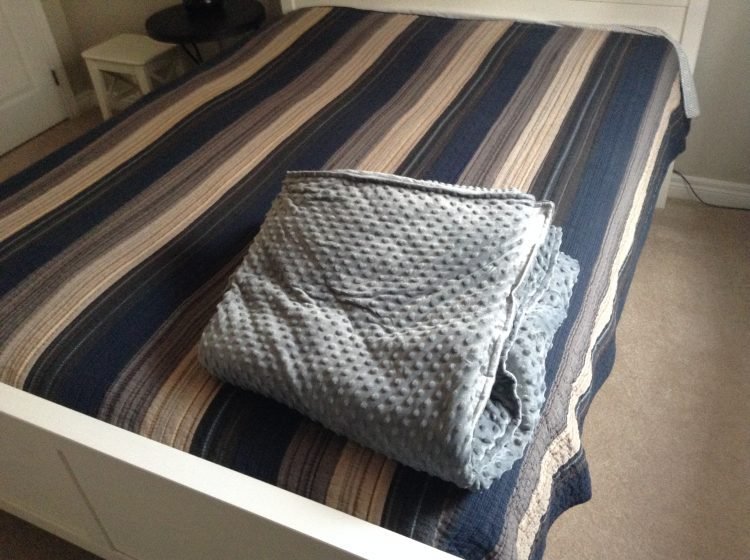
In conclusion
Weighted blankets have become a very important medical device in the field of physical therapy, finding applications in stress management, pain management, fibromyalgia, anxiety disorders, and depression. It is also being used by people who want real improvements in the quality of their sleep.
While there are many weighted blankets out there in a wide range of prices, focus instead on the quality and ease of management of the weighted blanket. Also, make sure to factor in weight, size, type of material in making your purchase.

